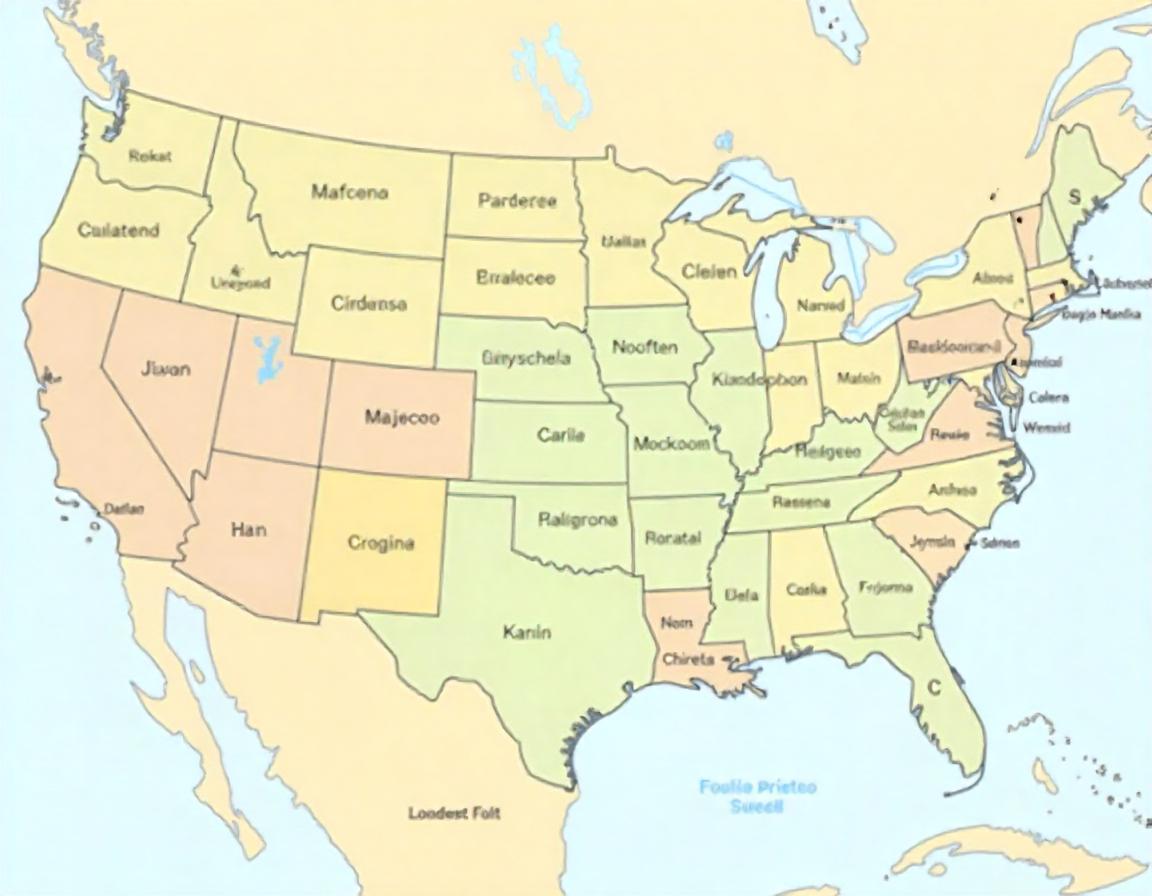Health
Map of Western US Graph: A Guide for Beginner

Map of Western US (United States), often referred to as “The West,” encompasses a vast and diverse region characterized by varied landscapes, climates, and cultures. For beginners interested in understanding this area, maps serve as invaluable tools to visualize and comprehend its geographical and cultural complexities.
Learn About The Western United States
The Western U.S. comprises 13 states: Northern states, including Alaska, Arizona, California, Colorado, Hawaii, Idaho, Montana, Nevada, New Mexico, Oregon, Utah, Washington, and Wyoming.
As already stated, this region covers approximately 50 percent of the country’s geographical area and presents a wow factor in terms of geography. From the rocky Rockies to the snowy Sierras, from the gigantic expanse of the Mojave and Sonoran deserts and back again, the West provides a natural coloring book for America. California, Oregon, and Washington have counties that are bordered by the Pacific Ocean, while other states have large areas of plains, plateaus, and basins.
This diversity affects climate differently; the coastal regions receive a temperate climate, while the desert receives an arid climate, and mountain regions receive an alpine climate. These geographical features are important in comprehending the environmental and cultural aspects of the region.
Types of Maps and Their Uses
Maps are geographical mirroring or images of territories in which information concerning different aspects of an area is given. Several types of maps are particularly useful for exploring the Western U.S.:
Physical Maps: These maps sing out various features in the geographical environment, including mountains, rivers, and deserts. They include in the context of the western US, one could use physical maps to show features such as the Sierra Nevada or the Great Basin, or even the direction of the Colorado River. Such maps are important, especially in order to get acquainted with the geographical features of the area.
Political Maps: Political maps that emphasize state and city borders are tasked with showing how humans have divided up the area in question. It is to distinguish state lines and large population centers and study the topographical and political aeronautics of the West.
Road Maps: These maps indicate highways and roads, along with transportation, suggesting how travelers can cross the plains of the western states. They are rather useful for mapping road trips, estimating the accessibility of rural areas, and realizing local transport connectivity.
Topographic Maps: They are used in activities such as hiking and surveying land elevation changes and contours, of which they are critical in environmental studies. These produce a three dimensional view of the ground and highlight landmarks such as mountains, low land tracts, and table heights.
Key Features of Western U.S. Maps
When examining maps of the Western United States, several key features stand out:
Mountain Ranges: The Rockies, Sierra Nevada, and Cascades are highly notable and play a major role in determining climate, wildlife distribution, and probably the common human habitation. In the physical and topographic maps, these ranges are depicted with the highest degree of elevation and wideness.
Deserts: Places such as the Mojave, Sonoran, and the Great Basin Deserts are large and have an impact on regional climatic and ecological systems. The detailed maps of these deserts show the extent of the desert, including the geographical location of these deserts relative to others.
Rivers and Lakes: Some of the important water resources for the development of the region are the Colorado River, the Columbia River, and the Great Salt Lake. Their location and courses are indicated in physical and hydrological maps as central features of drainage systems.
National Parks and Monuments: Some places are marked, such as Yellowstone, Grand Canyon, and Yosemite, which are considered natural landmarks and famous tourist destinations. The maps pointing out these areas should ideally be of immense benefit to tourists and any academic instructors in the course of their tours.
Recognizing these features on a map enhances one’s understanding of the region’s physical and cultural landscape.
How to Read and Interpret These Maps
Interpreting maps involves understanding symbols, scales, and legends:
Legends: Describe some of the symbols, for example, the symbol for the highway, park, or any level of elevation. A map’s information must first be decoded and recognizing the legend is how the process is initiated.
Scales: Mark the proportion between a distance on the map and the distance, in reality, to assist users in estimating real-life distances. This will be very important, for instance, in planning the route for traveling or in identifying neighboring features.
Compass Roses: Have an orientation, normally with nthe orth at the top, to facilitate navigation and the map reader’s sense of direction. orientation is useful in relating the map to the real world geography referred to by the map.
Practical Applications of Western U.S. Maps
Maps of the Western United States serve various practical purposes:
Travel Planning: Maps are used by tourists to navigate and decide where to go and how to get there. For example, a road map can be used to plot a course of a joy ride along the stretch of the Pacific Coast highway or map out the routes between two national parks.
Educational Purposes: Maps are used by teachers and learners to teach and learn geography, history, environmental conservation, and development in the region.
Environmental Management: These maps help conservationists and policymakers comprehend the distribution of natural resources, land management, and solutions to physical problems. These efforts may be assisted by topographic and thematic maps.

-

 Entertainment7 months ago
Entertainment7 months agoWhat is Shoujo Ramune? The Comprehensive Guide
-

 Celebrity9 months ago
Celebrity9 months agoThe Untold Story of Denika Kisty: Her Family, Net Worth, and More
-

 Celebrity9 months ago
Celebrity9 months agoThe Untold Truth of William Mapel: A Deep Dive into His Personal Life
-

 Celebrity9 months ago
Celebrity9 months agoWho Is Stephanie Sarkisian? All You Need To Know AboutSteve Sarkisian’s Ex-Wife
-

 Celebrity9 months ago
Celebrity9 months agoWho Is Dolphia Parker?: The Untold Story of Dan Blocker’s Wife
-

 Celebrity8 months ago
Celebrity8 months agoWho is Christina Erika Carandini Lee? Everything About Christopher Lee’s Daughter
-

 Celebrity8 months ago
Celebrity8 months agoWho Is Susan Deixler? All You Need To Know About Barry Manilow Ex-Wife
-

 Celebrity8 months ago
Celebrity8 months agoWho is Laura Marie Holtzmann? The Untold Story of Joyce Meyer’s Daughter











